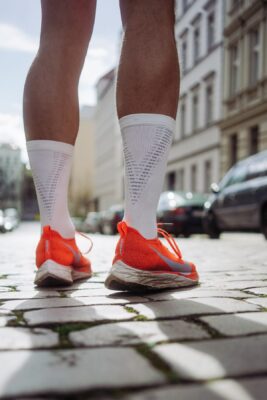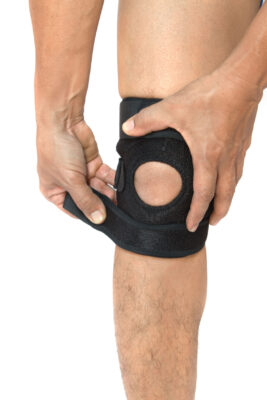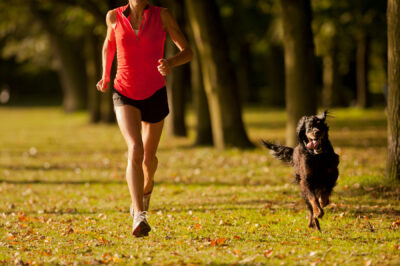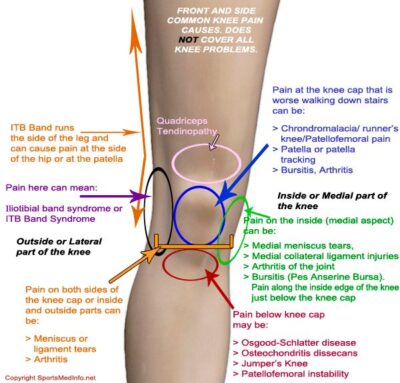BACK OF KNEE PAIN
By Mr. Sam Rajaratnam FRCS (Tr. & Ortho)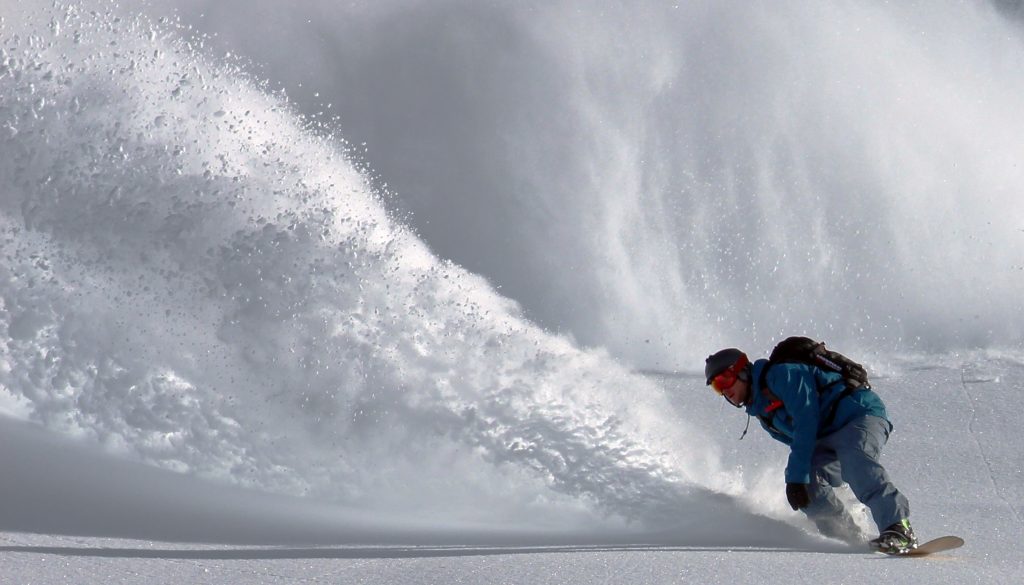
FAQs about Back of Knee Pain
I have just injured my leg and have severe pain at the back of my knee. What should I do?
A sudden, sharp, pain in the thigh or behind the knee may be a torn hamstring, or possibly a tear in the posterior part of the meniscus. Alternatively, if you have sudden pain and instability after an injury, perhaps accompanied by a popping sound, you may have damaged a knee ligament. It could also be a ruptured Baker’s cyst. In these cases, whilst RICE (rest, ice, compression and elevation) is recommended initially, you should go to your doctor and have the knee clinically assessed.
I am training for a marathon and have started to get a pain behind my knee every time I run. Do I need to rest it or do I need treatment?
The nagging pain or tenderness at the back of your knee which is causing you some discomfort could be hamstring tendonitis or an injury to the popliteus muscle. Both of these conditions are caused by overuse and repetitive actions. You should take a rest from training for a while and use the RICE treatment. If the problem does not clear up I would be happy to see you and assess things further.
Whilst squatting with a heavy load, I heard a pop and experienced sudden pain. Should I go to my GP?
A popping or cracking sound (called crepitus) on its own is not unusual and nothing to be worried about. However, if accompanied by sudden pain you may have damaged one of your knee ligaments (see Question 8), or torn a meniscus. You should consult your doctor. If the problem does not clear up I would be happy to see you and assess things further.
I have a pain behind my knee but I also feel unstable on my feet, as if my knee is looser. What should I do right away?
An unstable knee results from a problem with the tissues that keep the knee stable. This could be a ligament injury, a meniscal tear, a patella injury or an injury to the knee capsule itself, or to the muscles which provide secondary stability. You should consult your doctor to get a proper diagnosis as soon as possible. If the problem does not clear up I would be happy to see you and assess things further.
I only have pain behind my knee when walking up or down the stairs. What should I do?
The act of walking up and down stairs involves straightening the knee whilst it is bearing weight, and the the most common cause of pain in this case is chondromalacia patella. This condition is brought about by the cartilage on the underside of the kneecap deteriorating and softening. Some people can ignore the condition, but in the end it will probably need to be surgically addressed. It may be that a flap of cartilage has become unstable, in which case it can be treated by a chondroplasty, repairing the damaged cartilage using keyhole surgery.
When I straighten or stretch my leg, I feel pain behind my knee. What should I do?
Difficulty in stretching your leg may be due to a collection of synovial fluid. If you can also feel a swelling in the back of your leg it may be a Baker’s cyst which makes the knee feel tight. This is not serious, but if it does not clear up you should see your doctor. Swelling in the calf may be a blood clot in the popliteal vein which is serious and should be seen by a doctor as soon as possible particularly if the swelling is accompanied by warm/red tender skin. Difficulty in straightening your leg may also be due to arthritis or a tear in a meniscus. You should see your doctor and get a proper diagnosis.
I feel numbness behind my knee. Is this serious?
Temporary numbness may be because you have been sitting for a while in a position which has compressed the nerves in the back of your leg or reduced the blood flow. This is called paresthesia and will dissipate when you start walking around again. However, if the numbness persists it could be due to many different causes, for example it may be a sign of an underlying condition such as a back problem, diabetes or a nerve disorder. You should visit your doctor to discover the reason for the numbness.
Because your knees bear the body’s weight and are subject to movement in a number of planes they can be quite vulnerable to trauma and to conditions resulting from trauma and wear and tear.
There are a number of different types of condition which can cause pain to the back of the knee. These include strains or tears to the muscle or tendons, damage to the ligaments, damage to the cartilage within the knee joint, excess fluid in the knee or blood vessel problems.
The information given below will give you an indication of the problem you may be having, but is not intended that you diagnose yourself. Also this guide is intended for pain behind the knee itself; if your pain is part of general joint pain there will be other reasons for this and you should consult a doctor.
MUSCLE AND TENDON CONDITIONS
The shallow depression formed at the back of the knee is called the popliteal fossa; it is formed at the junction of the femur and tibia. There is a muscle here on the floor of the popliteal fossa which is the deepest muscle of the knee joint. It works on the femur to rotate it on the tibia when walking. Through the popliteal depression a bundle of muscles (the semimembranosus, semitendinosus and biceps femoris) run from the pelvis to the knee and attach to the tibia and fibula respectively by tendons. These three muscles are collectively called the hamstring muscles, and function to extend the leg and bend the knee.
At the back of the lower leg the calf muscles are composed of the gastrocnemius and soleus muscles which flex the leg at the knee and flex the ankle via the achilles tendon.
Pain behind the knee when walking or running
The cause of pain at the back of the leg behind the knee could be hamstring tendonitis. This is caused by the tendons of the hamstring becoming inflamed, often due to overuse of the hamstring muscles, but the pain will subside after rest and first aid centred on the ‘RICE’ method (Rest, Ice to reduce the swelling, apply a Compression bandage and Elevate the knee).
If you notice a sudden sharp pain in the back of the thigh when undergoing vigorous exercise this may be due to a pull, partial tear or tear of the hamstring, and is due to overloading the muscle. This type of injury is most often treated by a doctor. A similar pain in the calf may be due to gastrocnemius tendonitis.
A tenderness behind the knee, felt when rotating the leg inwards in the act of walking could denote an injury to the popliteus muscle. A cold pack applied for 10 minutes every hour for the first day after injury can alleviate the symptoms.
All the muscles at the back of the leg can be subject to cramp. This is a common condition and occurs when a muscle goes into spasm. The symptoms are a tightening of the muscle accompanied by pain. Amongst other causes, it could be due to dehydration, muscle fatigue or a restriction of the blood supply to the affected muscles. Cramp is not serious and can be relieved by relaxing, massaging and stretching the affected muscle.
DAMAGE TO THE LIGAMENTS OF THE KNEE
Ligaments are strong, flexible, fibrous and elastic connective tissue which connect one bone to another, provide stability and support joints. They do not connect muscles to joints, that is done by the tendons.
The ligaments of the knee comprise the medial and lateral collateral ligaments, on the inside and outside of the knee respectively, which give sideways stability to the knee joint, and the anterior and posterior cruciate ligament at the front and back of the knee. There is also a patellar tendon, which is really a ligament, which attaches the bottom of the patella to the top of the tibia.
A sudden severe pain or ‘popping’ sound accompanied by swelling and a feeling of looseness of the joint and instability
This may be due to damage to one of the knee ligaments, and is commonly seen as a result of sports injuries concerned with a sudden impact, twisting or over stretching. If the ligament is torn or twisted it is a sprain (equivalent to a strain in a muscle or tendon). If you suspect a damaged ligament you should comply with the ‘RICE’ procedure, but not immobilise the joint as there is a risk of stiffness and possible muscle atrophy. The injury should be clinically assessed, and may need surgery.
Pain behind the knee when bending it or pain and stiffness below the kneecap
Although not behind the knee, the patellar tendon can be overloaded and torn by repetitive actions such as jumping, running or kicking. This is called patellar tendonitis, and can get progressively worse as the the torn tendon swells and becomes weaker. Again the RICE formula should be applied, and your doctor should be consulted.
Pain, swelling and a bony lump below the kneecap, typically in children or adolescents
The patellar tendon can also be a factor in both Osgood-Schlatter’s Disease and Sinding-Larsen-Johansson Syndrome, where it become inflamed at its attachments to bones during growth spurts together with inflammation of the growth plates. This typically occurs in children or adolescents and often heals of its own accord, but your doctor may prescribe physiotherapy, knee protection or other measures.
SYNOVIAL FLUID PROBLEMS
In the knee joint the ends of the femur and tibia are enclosed within a synovial joint. This synovial joint has a synovial capsule enclosing both the articular cartilage on the end of your femur and tibia, and the synovium. The synovium contains loose connective tissue, blood vessels, lymphatic vessels and cells which produce synovial fluid to lubricate the joint.
A swelling at the back of the knee and calf causing pain, and a feeling of tightness when straightening the leg
This may be due to a Baker’s Cyst, which is an accumulation of synovial fluid in the popliteal fossa. The synovial fluid is over-produced, due often to a trauma to the knee or in conditions such as arthritis. The cyst may clear up on its own, but if not it is advisable to visit the doctor.
Swelling in the knee joint due to extra synovial fluid being produced also occurs due to accidental damage to the knee or when osteoarthritis is present.
CONDITIONS DUE TO CARTILAGE DAMAGE
There are two triangular, or wedge shaped, pieces of cartilage in the synovial joint which are called menisci. One lies on the inside, or medial side, of the knee, and one on the outside or lateral side. They act as shock absorbers between the femur and tibia, the end surfaces of which also have a cartilage covering called articular cartilage. At the front of the synovial joint is the patella which is an oval bone protecting the front of the joint and lined internally with cartilage.
A popping sensation behind the knee or pain and stiffness at the side of the knee
May be the result of a torn meniscus, particularly the posterior horn of the meniscus. This can often occur due to an impact or twisting sports injury, and is more likely as one gets older and the meniscus becomes worn. Pain might not be evident until some time after the injury occurred. RICE may temporarily alleviate the symptoms, but the tear will often require a surgical procedure.
Discomfort, aching and tightness in the knee, grating and pain behind the kneecap when bending the knee or when it is exercised after a period of rest
May be due to chondromalacia patella. In this condition the cartilage on the underside of the patella softens and deteriorates. Some people are able to ignore the condition, but it will not improve and will probably need surgery. Sometimes an unstable flap of surface cartilage may cause this pain, and may be curable with simple keyhole surgery and a chondroplasty.
Pain and stiffness. A grinding sound when the knee is bent. Perhaps swelling of the knee and a feeling of instability
These are often the symptoms of arthritis. Although there are many different forms of arthritis, osteoarthritis is the most common. It is more likely to affect women than men, and, if it occurs, it is more prevalent after middle age. It is caused by erosion of the articular cartilage within the synovial joint, so that the bone of the femur and tibia come into contact and rub against each other causing pain and inflammation. Osteoarthritis is often due to normal wear and tear over a period of time, although injury, repetitive activity, obesity and genetics can also be factors. There is no cure for osteoarthritis, and, although various methods can temporarily mollify the symptoms, surgery is the only permanent solution to eliminate pain and increase mobility.
PROBLEMS DUE TO BLOOD VESSELS
The popliteal artery and its accompanying vein are major blood vessels at the back of the knee. The artery branches off from the large femoral artery which runs down from the top of the leg, and divides into several other significant blood vessels around the distal end of the femur and proximal ends of the tibia and fibula. The popliteal vein follows the path of the artery and carries blood back to the heart.
Aching, cramp, tiredness or numbness at the back of the knee and calf
Is most likely due to Popliteal Artery Entrapment Syndrome, where the artery becomes compressed due to pressure on it from the muscles and tendons around the knee. The blood supply to the artery is reduced or cut off. This can occur due to overuse or because of athletic activity, particularly if the calf muscles and muscles around the artery become over-developed due to exercise. Normally the artery will simply recover, but if the problem is persistent medical help should be sought.
Pain, tenderness, warm or red skin or a swelling behind the knee
May be the indication of a blood clot in the popliteal vein. This is also called a thrombosis, and the block would restrict the circulation of blood in your leg. More importantly a clot could form an aneurysm, which is an abnormal bulging in the vein walls, and could lead to a pulmonary embolism. If you suspect you have a blood clot it is imperative that you see a doctor as soon as possible. Your body can eventually break up small clots, but you may be sent for a CT scan to investigate the blood clot and given a prescription for blood-thinning medication.
WHEN TO SEE YOUR DOCTOR
If you are at all worried about any symptoms you experience, and certainly if you suspect a blood clot, you should consult your doctor. In addition any knee pain, swelling or reduced mobility that lasts for more than 48 hours needs a doctor’s opinion.
